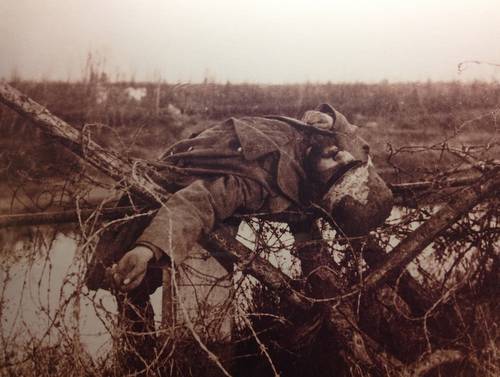The town of Gorizia stands on the Slovenian border in an expansion of the Isonzo valley, hemmed in by hills. It is a peaceful little town with public gardens and buildings in the Austrian style. After the fall of the independent counts of Gorizia in the 15th century, the city remained an Austrian possession almost continuously from 1509 to 1915 and its atmosphere is entirely Central European, despite the street names recalling heroes of the Risorgimento and Italy’s victories against Austria: Garibaldi, Mazzini, Diaz, Cadorna. In the First World War it was the objective of violent Italian attacks in the Isonzo valley and was eventually captured on 9th August 1916. Lost again in the autumn of 1917, it was finally taken in November 1918. The Treaty of Paris (1947) brought the Yugoslav frontier into the streets of the town, cutting off its eastern suburbs, but in 1952, and again in 1978–9, more reasonable readjustments were made, including a 16km-wide zone in which local inhabitants may move freely.

The attractive, wide Corso Italia, lined with trees and some Art Nouveau villas, leads up into the centre of the town. The Palazzo Comunale was built by Nicolò Pacassi, court architect to Maria Theresa, in 1740; it has a public garden. The cathedral is a restored 14th-century building which contains a high altarpiece by Giuseppe Tominz (born in Gorizia in 1790).
Approached on foot by steps up through the walls and past a garden is the peaceful Borgo Castello, built by the Venetians in 1509. Here you will find the Museo della Grande Guerra, one of the most important museums in Italy dedicated to the First World War. Excellently displayed in ten rooms, it has the reconstruction of a trench, and the material illustrates both the Italian and Austrian fronts in the Carso campaign: what makes the displays all the more poignant is the fact that this part of Europe, which today belongs to Italy, was in 1914–18 fighting bitterly for the doomed Austro-Hungarian empire of Franz Joseph, of which it formed a part. A poster of the whiskered emperor adorns the wall of a mocked-up conning tower, exhorting his troops to bravery in action. Enamel badges in the display cases proclaim defeat and humiliation to the English, the Serbs and the perfidious Italians. The watercolour which appears at the top of this piece was painted by Paolo Caccia Dominioni, a lieutenant in the Italian army, who saw action at Castagnevizza and whose brother Cino was killed in a later battle.

The above text includes an extract from the Blue Guide e-chapter to Friuli-Venezia Giulia. © Blue Guides. All rights reserved.







It’s great to see your comments on Gorizia, but I do think you overstate to Great War museum – particularly in comparison (a comparison which must be made) with the fine one at Kobarid (what Italians called Caparetto), a short distance up ther Soca (Isonzo) river to the north. That at Kobarid seems also far more neutral – as well as having a fine video (in English). However in Gorizia castle itself, there is currently (I last visited in June 2015) an interesting exhibition around the Great War, with newspapers and propaganda and so forth.
Thank you for your thoughts. Caporetto is of course a major WWI site and you are completely correct to say so. But in this blog post we wanted to concentrate on Gorizia. We were the only people in the museum when we visited. The staff were extremely welcoming and kind and I wanted to encourage others to make time for it. It is worth seeing, after all. Making comparisons with Kobarid would entail weighing the Italian museum against the Slovenian. An interesting exercise, certainly, but a subject for a completely separate blog.